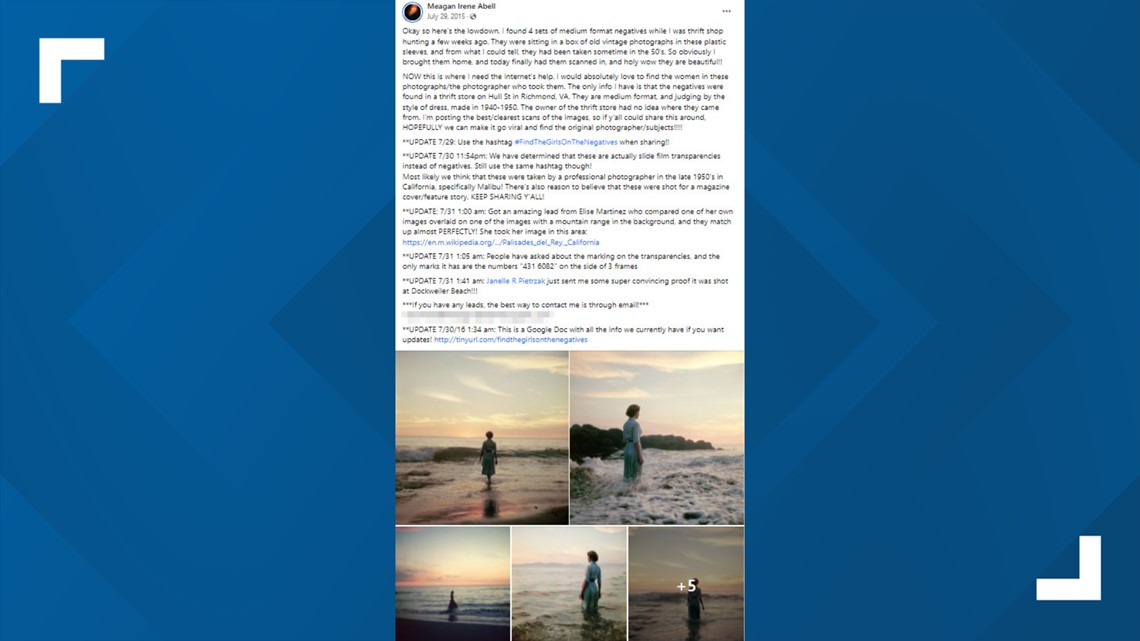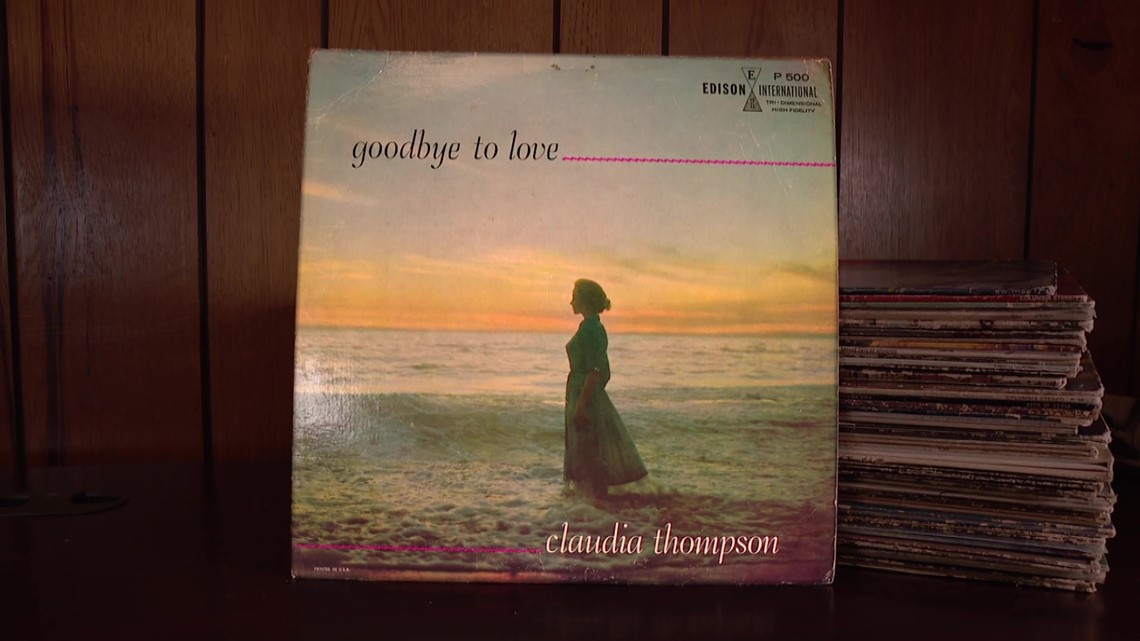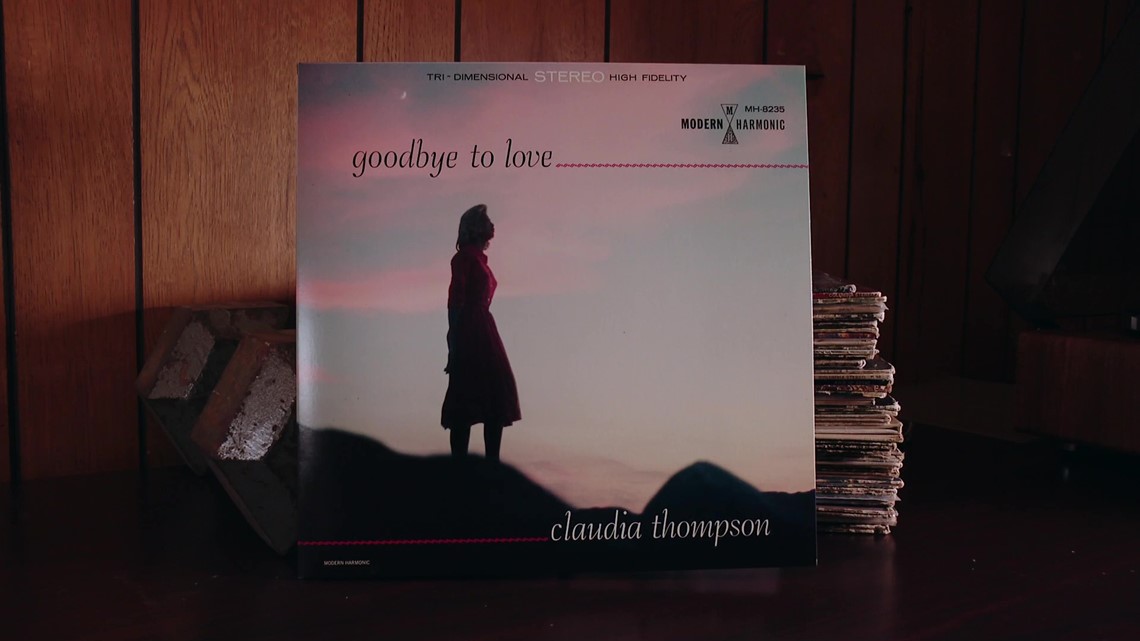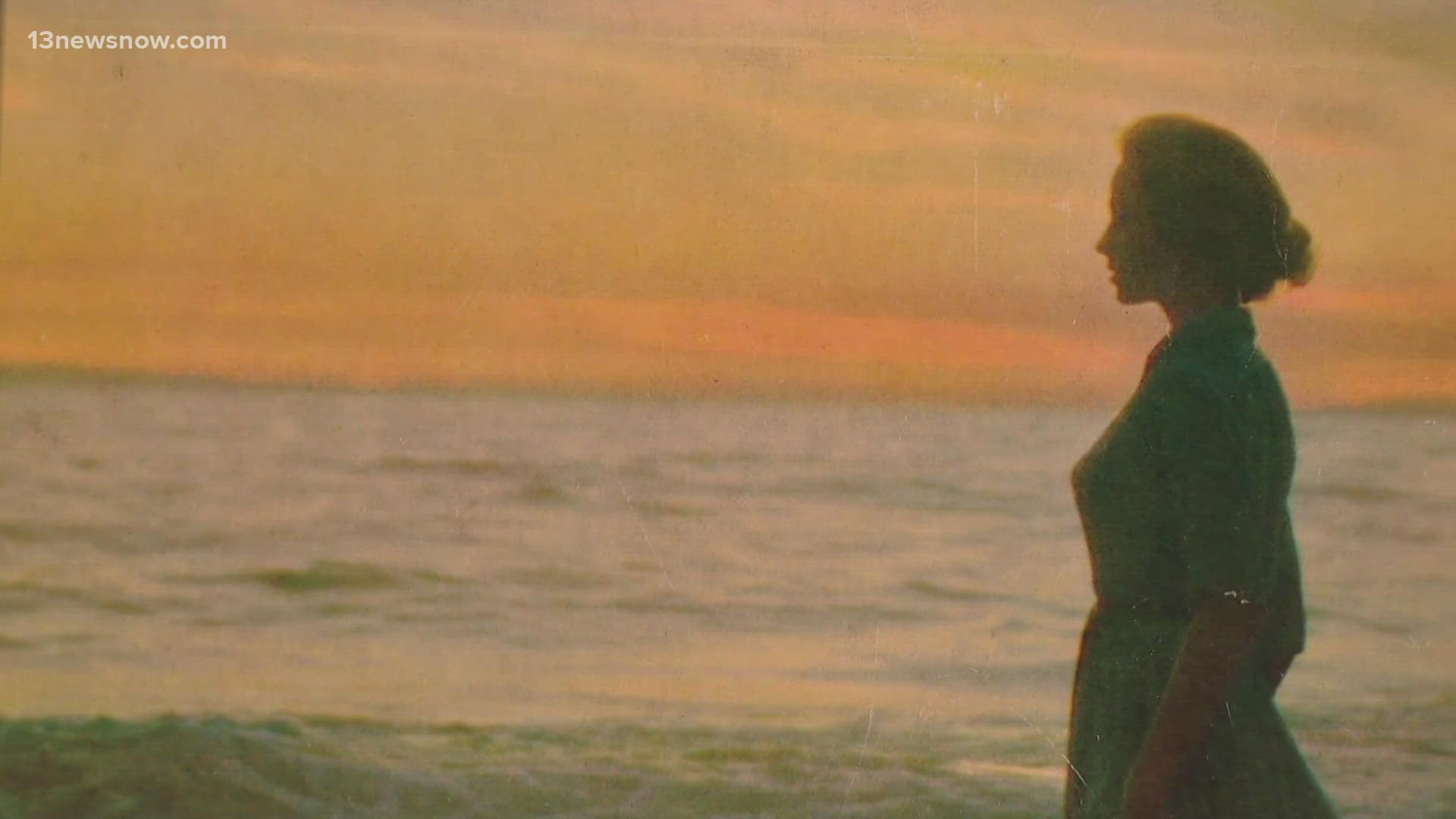NORFOLK, Va. — For decades, mysterious singer Claudia Thompson was known only for her lone jazz record, "Goodbye to Love," released in 1959.
The album cover featured a White woman in a blue dress, facing the ocean, on a California beach. Little else was known about Thompson.
That is, until more than 50 years later when the discovery of photo negatives in a Virginia thrift shop led to a viral social media post and national search for the two women in the photos.
It was eventually discovered that the negatives were connected to Thompson's album, with one of them closely matching the image on the "Goodbye to Love" album cover.


However, there was another woman photographed in the same photoshoot. She was a Black woman in a red dress, and like the cover model, also had blonde hair and gazed solemnly toward the California sunset.
The search uncovered new information: a note and close-up photo from the real Claudia Thompson, the jazz singer who was left off her own album cover.
Listeners of the album wouldn't have known that Thompson was Black. There was no indication about who she was.
"They wanted the voice but they didn’t want the image," said Laina Dawes, a music journalist and author. "Ethically and morally it’s frustrating, that was the music industry, unfortunately."


The discovery found its way to record label Modern Harmonic, a subsidiary of Sundazed Music – the now-owners of Thompson’s album.
"I got the chills," said Jay Millar, general manager of Modern Harmonic. "We took it for granted. We assumed, 'Why wouldn’t it be the woman on the cover?'"
Modern Harmonic decided to re-release the album, this time with Thompson's photos and liner notes explaining the story and discovery written by Dawes.
"It’s just exciting to do, and we love when we can help do the right thing and maybe correct the missteps from the past," Millar said.


Thompson's identity remains a mystery, details of her life beyond this record, lost to time.
Dawes, a music journalist, said Thompson’s pure tone could’ve convinced music executives to use the white model’s photo to make the record more "palatable" to the masses.
Thompson didn’t sound like Bille Holiday, Ella Fitzgerald, Nina Simone, or other prominent Black artists of the time, Dawes said.
"So instead of that racial inflection, what she did is [produce] a lot of emotion, a lot of sadness in her voice," she said. "I wonder if that was hinting to this personality that we don’t know anything about, simply because of how the album was marketed."
Jazz is often a musical form of the unexpected, with twists and turns of stories and sound. In the case of Claudia Thompson, Millar and Dawes wonder what might've been.
"Who knows? It really could’ve been a completely different story had she been on the cover of the original release," Millar said. “They took her photo, and so she probably had the anticipation she was going to be on the cover. I can’t imagine how those conversations played out.”
Dawes said the revelation of whitewashing provides a reminder of the social conditions within the music industry.
"When these machinations that deal with race and gender happen, you can find yourself on the outside," Dawes said. "We don’t know what she could’ve been, but she could’ve been a star."
So far, music executives, journalists, and researchers have all failed to find out more about Claudia Thompson’s life after the release of her "Goodbye to Love" album.
Modern Harmonic said this re-release will, at least, help preserve her history. The album is available to purchase in record stores and on Modern Harmonic's website.

